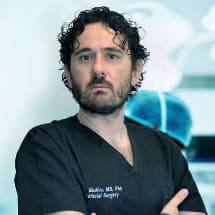Breakthroughs in Oral and Maxillofacial Surgery
A special issue of Journal of Clinical Medicine (ISSN 2077-0383). This special issue belongs to the section "Dentistry, Oral Surgery and Oral Medicine".
Deadline for manuscript submissions: closed (25 March 2023) | Viewed by 32662
Special Issue Editors
Interests: dentistry; oral surgery; implant dentistry; MRONJ; teledentistry; telemedicine; regenerative dentistry; oral medicine
Special Issues, Collections and Topics in MDPI journals
Interests: bone augmentation procedures; dental implantology; maxillofacial surgery; oral pathology; oral surgery; platelet-rich fibrin
Special Issues, Collections and Topics in MDPI journals
Interests: dental implantology; oral surgery; osteonecrosis of the jaws; platelet concentrates; platelet-rich fibrin; third molar surgery
Special Issue Information
Dear Colleagues,
Over the last few years, oral and maxillofacial surgery (OMFS) has seen significant improvements in the medical and dental fields. This specialty includes the diagnosis and the surgical and adjunctive treatment of diseases, injuries and defects involving both the functional and aesthetic aspects of the hard and soft tissues of the oral and maxillofacial region.
In recent years, clinicians and researchers have made several significant changes in every aspect of OMFS from diagnosis to treatment. In particular, the synergy between oral surgery, maxillofacial surgery and oral pathology plays a role of primary importance in the management of patients with oro-maxillary problems. Recently, the attention of the research has been focused on new therapeutic and diagnostic approaches in the management of diseases of the oral cavity, on innovative surgical techniques for the rehabilitation of atrophic jaws, on the use of new procedures of hard and soft tissues regeneration and on the virtual surgical planning. For this reason, the therapeutic–diagnostic approach requires an important effort by researchers and health professionals.
For this Special Issue on "Breakthroughs Oral and Maxillofacial Surgery" we invite you to submit proposals in every field of research on innovation in oral and maxillofacial surgery.
Topics may include (but are not limited to):
- Implant-prosthetic rehabilitation of the jaws;
- Management of oral diseases;
- New approaches and technologies in oral-maxillofacial surgery;
- Regenerative techniques of hard and soft tissues;
- Medication-related osteonecrosis of the jaws;
- New diagnostic and therapeutic tools in the management of oral potentially malignant disorders;
- Oral mesenchymal stem cells.
Dr. Alessandro Antonelli
Prof. Dr. Amerigo Giudice
Dr. Francesco Bennardo
Guest Editors
Manuscript Submission Information
Manuscripts should be submitted online at www.mdpi.com by registering and logging in to this website. Once you are registered, click here to go to the submission form. Manuscripts can be submitted until the deadline. All submissions that pass pre-check are peer-reviewed. Accepted papers will be published continuously in the journal (as soon as accepted) and will be listed together on the special issue website. Research articles, review articles as well as short communications are invited. For planned papers, a title and short abstract (about 100 words) can be sent to the Editorial Office for announcement on this website.
Submitted manuscripts should not have been published previously, nor be under consideration for publication elsewhere (except conference proceedings papers). All manuscripts are thoroughly refereed through a single-blind peer-review process. A guide for authors and other relevant information for submission of manuscripts is available on the Instructions for Authors page. Journal of Clinical Medicine is an international peer-reviewed open access semimonthly journal published by MDPI.
Please visit the Instructions for Authors page before submitting a manuscript. The Article Processing Charge (APC) for publication in this open access journal is 2600 CHF (Swiss Francs). Submitted papers should be well formatted and use good English. Authors may use MDPI's English editing service prior to publication or during author revisions.
Keywords
- Implant-prosthetic rehabilitation
- Oral diseases
- Oral and Maxillofacial Surgery
- Medication-related osteonecrosis of the jaws
- Oral mesenchymal stem cells
- Virtual surgical planning
- Oral cancer
- Oral pontentially malignant disorders
- Regenerative dentistry








